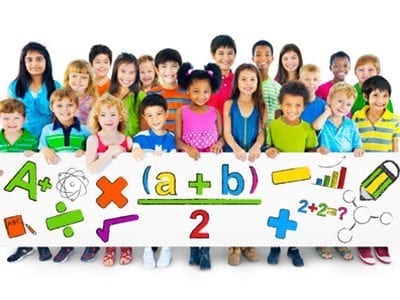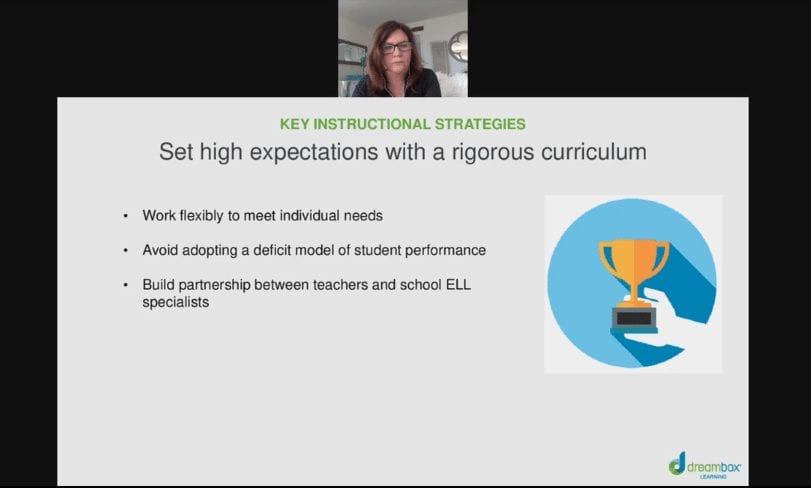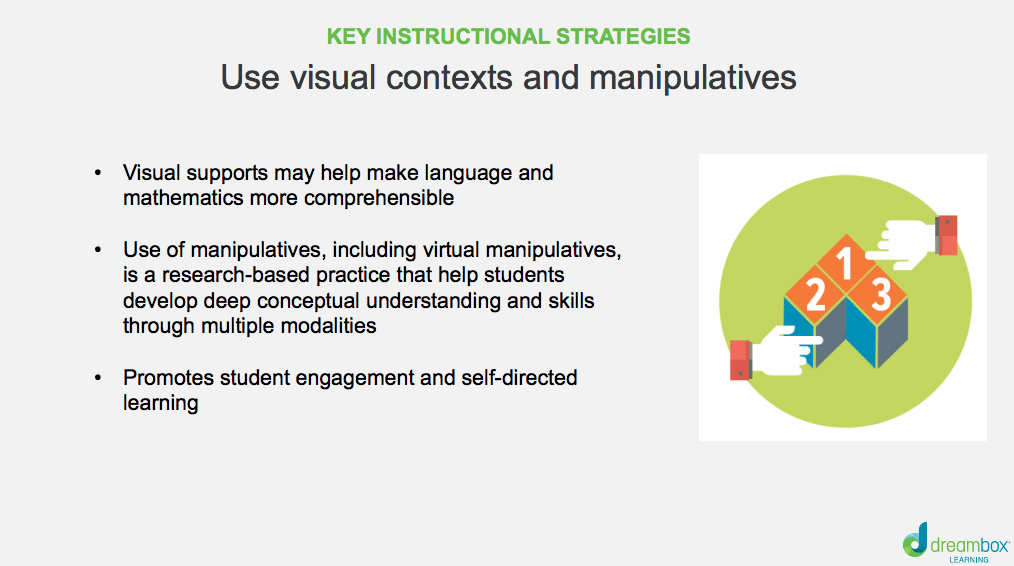Strategies for Supporting ELL Students in Math
For many of the 4.5 million English Language Learners (ELLs) in U.S. elementary and middle school classrooms, learning and understanding the language of mathematics can be a challenge. Supporting ELLs requires a commitment to a shift in practices which involves the entire school and also branches out to the community. Michele Dawson, Senior Director of Instructional Technology in Compton Unified School District, CA, and Kelly Urlacher, Senior Curriculum Designer at DreamBox Learning, had a conversation of essential approaches for supporting these students in “Key Strategies to Making Access and Equity a Reality for ELL Students.”
According to nprEd, in 2016 32 states reported not having enough teachers for ELL students. “We need to make sure that we are really addressing what WE’RE doing to make sure that they have the best possible experience in school,” said Kelly. At Compton Unified, ELL students receive differentiated instruction with a teacher and language development through blended learning activities, Michele explained. They are also focusing on moving students into a 21st century learning model consisting of the Four Cs, inquiry-based learning, the SAMR model, and technology which is differentiating, individualizing, and redefining learning.
Kelly and Michele discussed key instructional strategies that can support ELL students in achieving higher in math. Utilizing bilingual faculty, support staff, aides, or tutors can provide structured support needed for students to build their math skills. ELL students may need individualized instruction or flexibility during lessons, but teachers should still maintain rigor and high expectations. Individualized instruction can ensure that students are getting a learning experience out of lessons. Using visual contexts and manipulatives can help with language barriers while building conceptual understanding in mathematics, and they also promote more engagement and problem solving without needing direct instruction.
Going beyond traditional assessments gives more ways for ELL students to demonstrate their learning in math. Balanced and dynamic assessments accommodate students in a way that reduces the language complexity, again, without reducing the rigor of math being assessed. “If students understand the language of the exam, they will do better,” Michele said. Engagement and motivation is also essential for academic success. Designing learning experiences in ways that require active involvement, increase active oral participation, and engage families in the learning process are a few ways to accomplish that. In fact, Compton Unified has digital parent nights to help familiarize families with the technology being used to support their children.
Every teacher in Compton Unified is trained in the personalized, individualized, and blended learning models that support ELL students. To keep up with areas of need in their training, teachers can choose from a variety of PD through online, weekly sessions, or summer institute options. Teachers are also trained to analyze data to better inform their instruction and design activities. The district’s goal is to change the role of the teacher to not just the holder, but the facilitator of knowledge, and to use data to better reflect how to impact these students by becoming the “architect of the learning experience,” Michele said.
This broadcast was hosted by edWeb.net and sponsored by DreamBox Learning.
This article was modified and published by eSchool News.
About the Presenters
Michele Dawson has over 25 years’ experience as a teacher, administrator, and technology director. She earned a master’s degree in leading for equity, achievement and democracy. Michele has served as Educational Technology Supervisor in San Francisco School District and currently is Senior Director, Instructional Technology for Compton Unified in California where she leads 21st Century Learning, technology integration and organizational management. She is committed to closing the achievement gap for underserved students through the lens of equity and social justice. As an accomplished grant writer, Michele has written multiple grants including the EETT competitive grant for PBL with Multimedia, for which she garnered the CSBA Golden Bell Award. Also as a passionate educator, she revitalized the North Bay CUE affiliate and served as president for three years. When she’s not tinkering with technology, you will find Michele running on Mt. Tamalpais, playing volleyball or traveling around the world
Kelly Urlacher started her education career as a teacher in 2002. She has her national boards and masters in technology and curriculum development. Kelly taught sixth grade for ten years and has a passion for math. She jokes that she loved to “infect” her students with the love of math. Kelly is now a senior curriculum designer for DreamBox Learning, where she has the opportunity to create lessons, develop technology-based teacher partnerships, and influence the way students learn math.
Join the Community
Leadership 3.0 is a free professional learning community where school and district leaders collaborate on innovative strategies to help teachers grow professionally, advance student learning, and improve communications with all stakeholders.






Comments are closed.